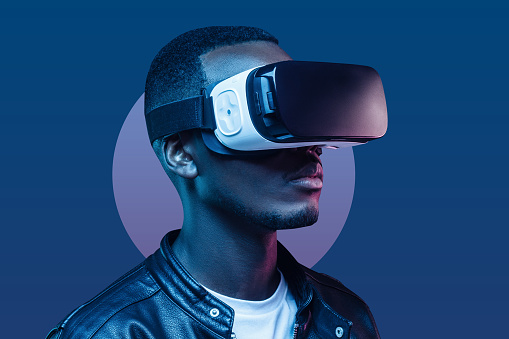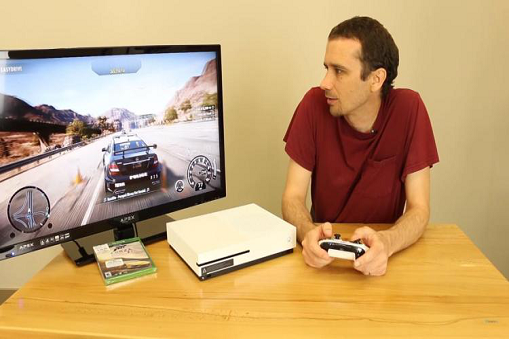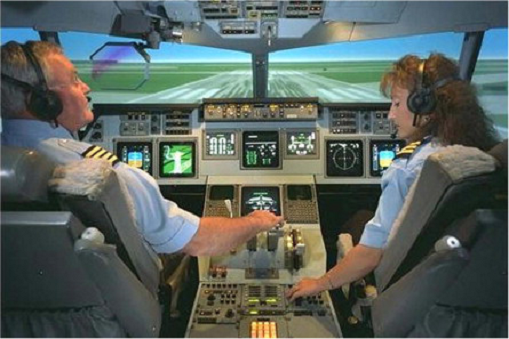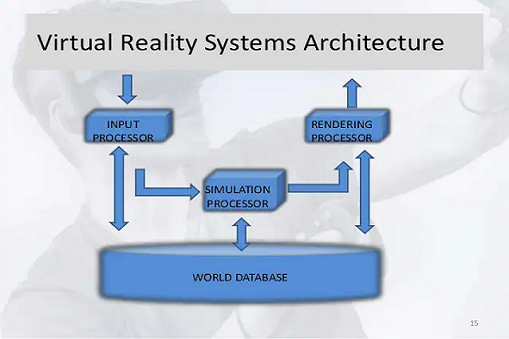Article on VIRTUAL REALITY (VR)
Nowadays, a lot of changes have been made in the technical field in the past few years. Due to these changes, the world is also changing. The launch of Virtual Reality (VR) and Augmented Reality (AR) has completely transformed different business sectors by allowing people to interact better with technology. Virtual Reality is one of the highest projected potential technologies. Over the next coming years, we are going to see things that make what is cutting edge today like Space Invaders. The effect of the VR transformation is going to be far broader, touching on our work, education, and social lives.

Virtual Reality (VR)
Virtual Reality (VR) is a computer generated environment/simulation with scenes & objects that enables a person to interact with an artificial 3D visual or sensor environment. In virtual reality, a separate virtual world is created instead of the real world via Virtual Reality headset or helmet with camera. Generally, in a VR format, the user wears a helmet with a stereoscopic screen views animated image of a simulated environment. Virtual Reality can recreate a sensory experience, which includes virtual taste, sight, smell, sound, touch, etc.

Working of Virtual Reality
VR system comes with a headset. A VR headset works as a head-mounted device that restricts the real world while providing virtual reality for the user. It also displays a 3D world simulation for the user. Basically, the screen is set to focus to fill the entire fringe vision while blocking out the outside world.
Working of Virtual Reality is a combination of both hardware and software. So, the hardware part is used to view the purpose, whereas the software helps in creating the environment. The main focus of virtual reality is to simulate the vision. The process of simulation begins with putting the VR headset. The user puts the VR headset in front of their eyes, so as to eliminate any interaction with the real world. There are two lenses placed between the screens. Once the user has placed the headset, it just needs to adjust eyes based on their movement of the eye and its positioning. As long as it is on, the scene moves and interacts with them as they move their head or use the controllers to look around and interact.
VR technology improvises with immersion as well. There are new headsets, like the Oculus Rift, which remains to be as one of the popular personal use VR system that goes well with the latest VR part to turn any smart phone screen into a VR system. With more & more competition in the market, there are types of products that will soon be available to users.
Types of Virtual Reality
Virtual Reality (VR) can be classified into three major categories. These are:

Immersive Virtual Reality: Immersive Virtual Reality system involves the user’s personal viewpoint in the virtual world. It uses a large projection displays are used to create a virtual background such as room or cave.
A fully immersive system’s sense of immersion depends on several parameters including the field of view of resolution, the update rate, and contrast and illumination of the display. Immersive type user wears an Head Mounted Displays (HMD).

Non- Virtual Reality Immersive : Non-Immersive Virtual Reality systems are the least immersive implementation of VR techniques. Using these systems, the virtual environment (VE) is viewed though a portal or window by utilizing a monitor.
In non-immersive VR, the interaction happens by using conventional method such as keyboards, mouse or by using 3D interaction devices such as SpaceBall, Data Glove, etc.

Semi-Immersive Virtual Reality : Semi-Immersive Virtual Reality systems are a new implementation of VR technology. It will comprise of relatively high performance graphics computing system which can be coupled with a large screen monitor, a large screen projector system, & multiple television projection systems.
It provides a greater sense of presence than non-immersive systems and also a greater appreciation of scale.

Architecture of Virtual Reality
Input Processor: It is used in controlling the devices which are used to input the information to the computer. The main objective is to coordinate the input data to the rest of the system with less lag time.
Simulation Processor: This is the core of a VR system. The main objective is to take input from the user along with any other tasks programmed in to the world and determines the actions that will take place in the virtual world.
Rendering Processor: It is used to create the sensations that are output to the user. There are separate rendering processes that are used for visual, auditory, haptic and other sensory systems.
World Database: It is used to store the objects that inhabits the world, scripts that are used to describe actions of those objects.

Virtual Reality System Components
Input Devices: It is used by the user to interact with the virtual world.
VR Engine: VE engine depends on the application field user, I/O devices, level of immersion and the graphic output required.
Output Devices: It is used to get feedback from the VR engine and pass it on to the users. The possible classifications of output devices are: graphics, audio, haptic.
System Software: It is a collection of different tools for designing, developing and maintaining VE and the database where the information’s are stored.
VR HARDWARE:
- Primary user input interfaces
- Tracking interfaces
- Visual interfaces
- Auditory interfaces
- Haptic interfaces
- Olfactory interfaces
Applications of Virtual Reality
- Virtual reality in Military: It can be used by the military for flight simulations, battlefield simulations, medic training, vehicle simulation, virtual boot camp, etc. It provides a safe and controlled environment for practicing complex and potentially dangerous tasks.
- Virtual reality in Sports: It is used as training aid in different sports: golf, athletics, skiing, cycling, and etc. Also, used in digital training device in many sports and to help to measure a sports person’s performance and analyze their techniques.
- Virtual reality in Education: It is used to provide students with memorable and immersive experiences. VR can be accessible to every student and can also be monitored easily by the teachers.
- Virtual reality in Business: It offers the chance to rethink how they can present and engage their customers. Architects and designers can create virtual walkthroughs of their designs to customers. VR provides new hope for showcasing products and services and enabling clients to experience spaces before they are built.
- Virtual reality in Medical: It can be used for training different medical groups. With the help of this technology, professionals of different medical groups can determine their level of expertise for medical treatment before performing anything on the patient.
- Virtual reality in Media: It is used to allow multimedia communications to reach people in exciting ways.
- Virtual reality in Entertainment: Gaming is one of the most well-known applications of VR, allowing players to step into virtual worlds and interact with the game environment in new ways.
- Virtual reality in Virtual Tourism: Users can explore distant places and historical sites as if they were actually there, opening up possibilities for virtual travel.
Advantages of Virtual Reality
- Immersive Learning
- Risk free experience
- Experiencing things that are normally not experienced
- Entertainment, fun, artistic expression
- Tele-presence applications
- Creates an interactive environment
- Offers convenience
Disadvantages of Virtual Reality
- Very common but programmers will never be able to interact with virtual environments
- Disengagement with real world
- Very expensive
- VR replacing reality
- Training with a VR environment never has the same result as training and working in the real world
- Psychological damage, identifying problems
- Possible impacts on real body
Join Famark Community!
Famark community is a social platform for creative and innovative professionals from different domains.
Join Community